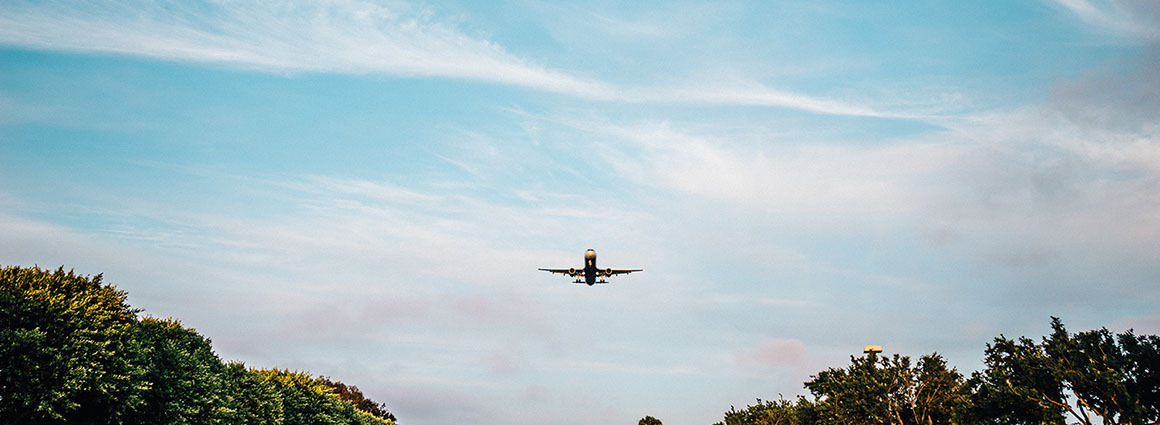

Evolution of the Airline Passenger Experience
Scouting new trends and technologies in myriad industries has been part of PDT's ethos for two decades now. We regularly send our team to expos around the globe in industries as varied as medical/laboratory, gaming, consumer electronics, automotive and aerospace. Since the inception of Telefonix PDT, the aerospace-focused design and development team within our partner company, Telefonix, we've done even more to understand what's on the horizon and, more importantly, how to integrate these advancements into solutions to enhance the passenger experience and improve processes, safety and efficiency for airlines.
It's been fun to look back on technologies that our team spotted as they were introduced years ago from both parallel and divergent industries that have been integrated into solutions currently in the air. Here are a few notable examples:
Technologies That Are Now On-Board
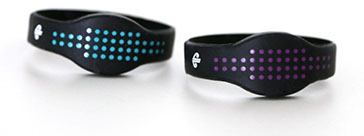
Appcessories
In our 2012 annual report following the Consumer Electronics Show (CES), we talked about the growing 'appcessory' movement, in which a mobile device is paired with a physical device and application. While the health and fitness industry was quick to develop appcessories that tracked and synced data about movement and heartrate, the passenger experience industry is also now alleviating known stressors of the travel experience with these solutions. Air New Zealand is tracking unaccompanied minors with a digital, silicon wristband that connects to a mobile device via an on-board chip. The airline provides the child with an Airband monitoring bracelet, which identifies the child, is scanned at check-in, when boarding a plane, when a flight has landed, when the child is handed over to ground staff and when a child is picked up by a designated person.
Air New Zealand's Airband monitoring bracelet
Connectivity for Entertainment
Of course, one of the biggest improvements on board in regards to the passenger experience is connectivity. With ever increasing data rates and other technological advancements, passengers have come to expect the ability to enjoy music, movies, and more. Inflight connectivity today is far behind speeds on the ground; however, with new satellite constellations delivered by Iridium Next this will change, making streaming (and binge watching) a reality at 30,000 feet.
Virtual Reality
Rockwell Collins' Virtual Reality Maintenance Trainer leverages an Oculus Rift (virtual reality device) to deliver a 'coach' to accompany users on the flight deck of a King Air aircraft. When Oculus Rift made its entrance at CES 2014, we predicted virtual reality would stick (unlike 3D), for the immersive and genuine user experience. The VR coach helps the user diagnose maintenance issues and accompanies the user to the avionics bay to replace the defective unit. Providing an immersive environment for training via virtual reality rather than transporting trainees to aircraft enables drastically reduced costs while providing a highly reliable and realistic training experience.
Lighting
Flexible LED lighting began to appear in luxury autos in 2007; and in 2014, we reported its prevalence in mainstream autos. Like Audi has done in making them a recognizable part of their brand aesthetic, Boeing's "Viu" lighting system is using flexible LED technology in the same way, offering an "infinite array of palettes, patterns, timed intervals and lumens" for airlines to choose to represent their brand. In our latest trend report from Aircraft Interiors Expo (AIX) 2016, we also feature Airspace by Airbus who is leveraging LEDs to enhance the ambiance of the space as well as reducing jet lag, they claim.
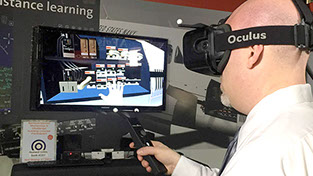
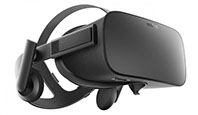
Oculus Rift leveraged for Rockwell Collins
What Is Currently Available But Not Being Fully Leveraged
Great User Interfaces
Consumer electronics companies have made user interface (UI) design a top priority in their product development for more than a decade. Simple, beautiful and intuitive experiences were designed as a strategic component of the product's brand. While there are offerings on board now that feature user interfaces, the vast majority don't reach the level they can, where the UI is a true differentiator and selling point.
Connectivity for Reporting Location/Delivering Unique Information
While connectivity has certainly taken huge leaps forward, there are so many more opportunities that aren't being leveraged fully. Enabling passengers to share real-time, unique information about their current situation, for example, being able to post on social media "flying at 23,000 feet above the Pacific, 500 miles from Honolulu, Hawaii" and include a photo from a camera mounted to the aircraft from the sky. The opportunities are just about endless.
Connectivity For Behind the Scene Efficiencies
While perhaps not sexy on the surface, innovations to make service, upgrades and tracking behind the scenes promise to dramatically improve the passenger experience. Rather than logs on estimated usage for components, in-flight entertainment modules are starting to be designed with RFID and other technologies to ensure maintenance is performed when needed, rather than when scheduled.

Cubii's under-desk elliptical
Movement and Activity
It's been said that sitting is the new smoking, so employers and employees alike are looking for ways to integrate activity in the workplace. We've seen an explosion of products that promote movement and well-being in the office, like Cubii's under-desk elliptical, standup and treadmill desks, and portable muscle massagers like the Moji product line. This same philosophy has a natural next step from the cubicle to the airplane.
What We Have Our Eyes On Now for Future Innovations
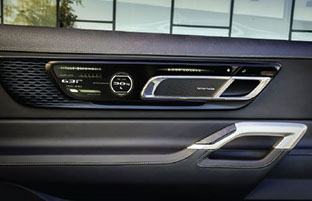
Conversational Interfaces
Apple's Siri, Microsoft's Cortana, Google Now and Amazon's Alexa are already making some voice commands possible on devices, but the technology is still far from perfect. There are plenty of big players working on improvements, though, including China's largest search engine, Baidu, who is currently making progress in terms of improving accuracy, which would make the technology an effective one to integrate into the passenger experience.
Biometrics
We reported on the Kia Telluride concept car in our 2016 Auto Show Trend Report, which features sensors that monitor vital health stats, including heart rate, which are displayed on LCDs embedded in the door panels. The implications for this technology are huge, including monitoring passenger satisfaction and comfort.
Sensors
It seems like just about everyone has some sort of sensing wearable these days; whether a Fitbit, Apple Watch or specialized medical tracking device, sensors have infiltrated the consumer and medical tech industries over the last handful of years. Sensor technologies for passenger experience products as well as equipment maintenance are certainly on the horizon for the aerospace industry.
Leaders in the aerospace industry are working harder than ever to leverage new technologies in novel ways to delight travelers. We're excited to be on board.
To take advantage of our ongoing tech and design trend reports, visit www.pdt.com/insights.html and sign up for PULSE.
Kia Telluride, a concept car featuring sensors that monitor vital health stats
About Product Development Technologies (PDT)
Product Development Technologies (PDT) is a global, full-service product development firm with 120 employees worldwide. Founded in 1995, PDT has grown to become one of the largest product development firms in the country. Team members have expertise in a wide range of product development disciplines, including design research, industrial design, user experience development, rapid prototyping, materials science, mechanical and electrical engineering, software development, strategy, scouting, and sourcing. PDT's award winning product designs have been recognized with more than 100 awards from authorities such as BusinessWeek, Fast Company, the Industrial Designers Society of America and The Consumer Electronics Association. For more information, please go to www.pdt.com.
CONTACT
PDT an Astronics Company
(847) 821-3000
###
